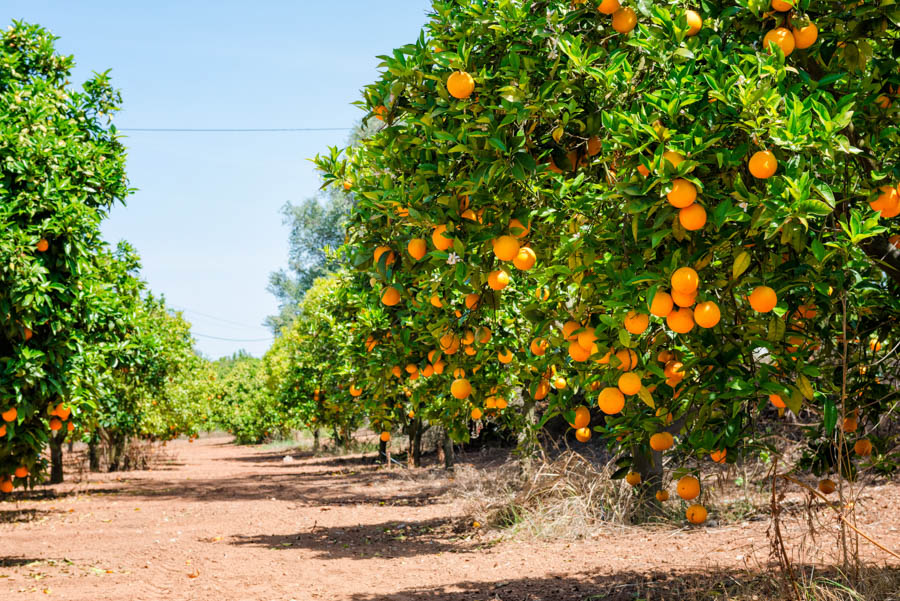Orange Trees: Should They Have Companion Plants?

GardenZeus recommends against planting under orange trees for the following reasons: 1) healthy trees have a dense, evergreen canopy that blocks sunlight for any lower growing plants; 2) gardeners need access to trees for harvest and pruning; and 3) established citrus plants thrive in dry upper soil conditions.
GardenZeus also recommends against using mulch, with bare soil only, for a distance from any citrus tree’s trunk of 2 to 4 times the diameter of the trunk, and at least several inches to a foot or more from major root buttresses and surface roots. This practice works to avoid trapping moisture in the upper soil and to discourage conditions that favor pathogens.
The evergreen canopy of healthy citrus trees effectively blocks sunlight for lower growing plants; few plants would thrive in conditions consistent with complete shade and the deep but infrequent watering needs of citrus trees. Established citrus trees prefer to be watered deeply at the dripline. Mature citrus trees generally need to be watered slowly for 4 to 6 hours or longer, about once every 2 to 3 weeks when when actively growing, when setting fruit, or during hot weather, and may need watering only once every 1 to 3 months during cool, dry weather if not actively growing or fruiting.
Gardeners need access to citrus trees for pruning and harvest. Flowering and fruiting in citrus trees occurs on new wood; for maximum harvest, GardenZeus recommends encouraging new growth by pruning citrus at least once per year. The process of pruning branches and harvesting widely spaced citrus fruits can easily damage underlying plants.
Established citrus thrive in dry upper soil conditions. Dry upper soil works to limit the spread of pathogens and pests that could damage the citrus trees. Again, few plants would thrive in conditions consistent with complete shade and the requirement of dry upper soil conditions.
Consider utilizing the space near and surrounding citrus with fragrant herbs and edible or ornamental plants that will support the living systems in your garden and landscape, such as those that feed insects, birds, or the soil, all to the benefit of your plants. Many plants in the Apiaceae family have beautiful umbellate flowers that are especially attractive to beneficial insects, such as ladybugs and lacewings. Flowering plants with a high sugar content in their nectar often support adult beneficial insects and butterflies. Consider also plants with abundant small flowers from the Lamiaceae or Asteraceae families.
If maintained and pruned well, citrus trees make excellent companions for other citrus trees when planted 2 to 5 feet apart as evergreen espaliers, hedges, as living fences, or intensively with up to four trees grown as a single tree. Citrus and other fruit trees can be planted using a method known as “intensive planting” or “intensive backyard orcharding.” Up to four citrus trees on compatible rootstocks may be planted in a single hole, spaced 12 to 24 inches apart. Rootstocks from the same species and/or genus will grow together underground, in a natural process called “fusing,” so that multiple original trees begin to function as a single tree, sharing water and nutrients. Intensive planting allows larger yields from smaller spaces, and progressive harvesting of smaller crops.

A variety of citrus trees planted separately but spaced approximately five feet apart. A “living hedge.”
Don’t know your GardenZeus climate zone? Click here.
Other articles of interest:
GardenZeus Quick Tips: Harvesting Lemons
Getting Started With Citrus: Purchasing and Placing Your Citrus Trees